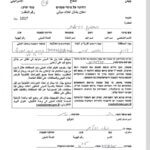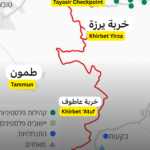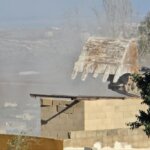Military control in the Jordan Valley

17 year old Yassir Sulaiman Sal man Najadah is still recovering from the Israeli army bullet that punctured his body on Thursday 26th April 2012. You may ask what crime he committed to deserve such a severe punishment, and the answer is simple. He was herding camels in the hills near Al Maleh in the northern
Yassir’s family and the thousands of other Palestinian families living in the
To simply go out and graze their camels, sheep, goats or cattle, as their families have done for generations, is a necessity, and a perilous act of resistance all at the same time.
 There are more than 20 military bases in the area. Where-ever you are in the valley you will be in sight of one of the masts and watchtowers up on the hillside, constantly looking down and surveilling every Palestinian community. The bigger military bases, with massive sheds full of tanks and jeeps, dormitories for the resident and visiting soldiers, are situated nearer the main roads. They are spread throughout the whole length of the
There are more than 20 military bases in the area. Where-ever you are in the valley you will be in sight of one of the masts and watchtowers up on the hillside, constantly looking down and surveilling every Palestinian community. The bigger military bases, with massive sheds full of tanks and jeeps, dormitories for the resident and visiting soldiers, are situated nearer the main roads. They are spread throughout the whole length of the
In total, 95% of the land in the Jordan Valley is off-limits to Palestinians: 50% is controlled the Israel’s illegal settlements, and the other 45% is military bases, ‘closed military zones’ and ‘nature reserves’ (areas controlled by the occupation, that Palestinians are refused access to).
The Israeli Occupation army treats the
 To survive independently any Palestinian farmer in the Jordan Valley has no choice but to pass one of the many concrete blocks declaring ‘Firing Area Entrance Forbidden’ and onto land that the occupation forces have declared as a ‘closed military zone’.
To survive independently any Palestinian farmer in the Jordan Valley has no choice but to pass one of the many concrete blocks declaring ‘Firing Area Entrance Forbidden’ and onto land that the occupation forces have declared as a ‘closed military zone’.
They live in a region that have been absolutely militarized in the past 45 years, with army bases, training grounds, military aircraft flying low overhead, checkpoints, the separation wall, demolitions and destruction.






